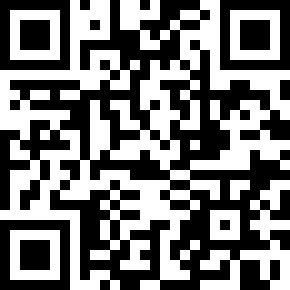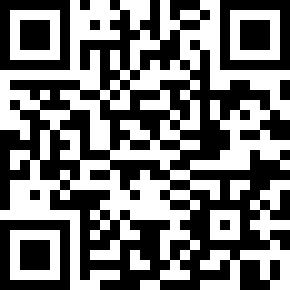悬浮窗相信大家应该都不陌生,下面这篇文章主要给大家介绍了关于Android应用内悬浮窗Activity简单实现的相关资料,文中通过实例代码介绍的非常详细,需要的朋友可以参考下
前言
悬浮窗是一种比较常见的需求。例如把视频通话界面缩小成一个悬浮窗,然后用户可以在其他界面上处理事情。
本文给出一个简单的应用内悬浮窗实现。可缩小activity和还原大小。可悬浮在同一个app的其他activity上。使用TouchListener监听触摸事件,拖动悬浮窗。
缩放方法
缩放activity需要使用WindowManager.LayoutParams,控制window的宽高
在activity中调用
android.view.WindowManager.LayoutParams p = getWindow().getAttributes();
p.height = 480; // 高度
p.width = 360; // 宽度
p.dimAmount = 0.0f; // 不让下面的界面变暗
getWindow().setAttributes(p);
dim: adj. 暗淡的; 昏暗的; 微弱的; 不明亮的; 光线暗淡的; v. (使)变暗淡,变微弱,变昏暗; (使)减弱,变淡漠,失去光泽;
修改了WindowManager.LayoutParams的宽高,activity的window大小会发生变化。
要变回默认大小,在activity中调用
getWindow().setLayout(ViewGroup.LayoutParams.MATCH_PARENT, ViewGroup.LayoutParams.MATCH_PARENT);
如果缩小时改变了位置,需要把window的位置置为0
WindowManager.LayoutParams lp = getWindow().getAttributes();
lp.x = 0;
lp.y = 0;
getWindow().setAttributes(lp);
activity变小时,后面可能是黑色的背景。这需要进行下面的操作。
悬浮样式
在styles.xml里新建一个MeTranslucentAct。
<resources>
<!-- Base application theme. -->
<style name="AppTheme" parent="Theme.AppCompat.Light.DarkActionBar">
<!-- Customize your theme here. -->
<item name="colorPrimary">@color/colorPrimary</item>
<item name="colorPrimaryDark">@color/colorPrimaryDark</item>
<item name="colorAccent">@color/colorAccent</item>
<item name="windowNoTitle">true</item>
</style>
<style name="TranslucentAct" parent="AppTheme">
<item name="android:windowBackground">#80000000</item>
<item name="android:windowIsTranslucent">true</item>
<item name="android:windowAnimationStyle">@android:style/Animation.Translucent</item>
</style>
</resources>
主要style是AppCompat的。
指定一个window的背景android:windowBackground 使用的Activity继承自androidx.appcompat.app.AppCompatActivity
activity缩小后,背景是透明的,可以看到后面的其他页面
点击穿透空白
activity缩小后,点击旁边空白处,其他组件能接到点击事件
在onCreate方法的setContentView之前,给WindowManager.LayoutParams添加标记FLAG_LAYOUT_NO_LIMITS和FLAG_NOT_TOUCH_MODAL
WindowManager.LayoutParams layoutParams = getWindow().getAttributes();
layoutParams.flags = WindowManager.LayoutParams.FLAG_LAYOUT_NO_LIMITS |
WindowManager.LayoutParams.FLAG_NOT_TOUCH_MODAL;
mBinding = DataBindingUtil.setContentView(this, R.layout.act_float_scale);
移动悬浮窗
监听触摸事件,计算出手指移动的距离,然后移动悬浮窗。
private boolean mIsSmall = false; // 当前是否小窗口
private float mLastTx = 0; // 手指的上一个位置x
private float mLastTy = 0;
// ....
mBinding.root.setOnTouchListener((v, event) -> {
switch (event.getAction()) {
case MotionEvent.ACTION_DOWN:
Log.d(TAG, "down " + event);
mLastTx = event.getRawX();
mLastTy = event.getRawY();
return true;
case MotionEvent.ACTION_MOVE:
Log.d(TAG, "move " + event);
float dx = event.getRawX() - mLastTx;
float dy = event.getRawY() - mLastTy;
mLastTx = event.getRawX();
mLastTy = event.getRawY();
Log.d(TAG, " dx: " + dx + ", dy: " + dy);
if (mIsSmall) {
WindowManager.LayoutParams lp = getWindow().getAttributes();
lp.x += dx;
lp.y += dy;
getWindow().setAttributes(lp);
}
break;
case MotionEvent.ACTION_UP:
Log.d(TAG, "up " + event);
return true;
case MotionEvent.ACTION_CANCEL:
Log.d(TAG, "cancel " + event);
return true;
}
return false;
});
mIsSmall用来记录当前activity是否变小(悬浮)。
在触摸监听器中返回true,表示消费这个触摸事件。
event.getX()和event.getY()获取到的是当前View的触摸坐标。 event.getRawX()和event.getRawY()获取到的是屏幕的触摸坐标。即触摸点在屏幕上的位置。
例子的完整代码
启用了databinding
android {
dataBinding {
enabled = true
}
}
styles.xml
新建一个样式
<style name="TranslucentAct" parent="AppTheme">
<item name="android:windowBackground">#80000000</item>
<item name="android:windowIsTranslucent">true</item>
<item name="android:windowAnimationStyle">@android:style/Animation.Translucent</item>
</style>
layout
act_float_scale.xml里面放一些按钮,控制放大和缩小。 ConstraintLayout拿来监听触摸事件。
<?xml version="1.0" encoding="utf-8"?>
<layout xmlns:android="http://schemas.android.com/apk/res/android"
xmlns:app="http://schemas.android.com/apk/res-auto">
<androidx.constraintlayout.widget.ConstraintLayout
android:id="@+id/root"
android:layout_width="match_parent"
android:layout_height="match_parent"
android:background="#555555">
<LinearLayout
android:layout_width="match_parent"
android:layout_height="wrap_content"
android:gravity="center"
android:orientation="vertical"
app:layout_constraintTop_toTopOf="parent">
<Button
android:id="@+id/to_small"
style="@style/NormalBtn"
android:layout_width="wrap_content"
android:layout_height="wrap_content"
android:text="变小" />
<Button
android:id="@+id/to_reset"
style="@style/NormalBtn"
android:layout_width="wrap_content"
android:layout_height="wrap_content"
android:layout_marginTop="12dp"
android:text="还原" />
</LinearLayout>
</androidx.constraintlayout.widget.ConstraintLayout>
</layout>
activity
FloatingScaleAct
import android.os.Bundle;
import android.util.Log;
import android.view.Display;
import android.view.MotionEvent;
import android.view.ViewGroup;
import android.view.WindowManager;
import androidx.appcompat.app.AppCompatActivity;
import androidx.databinding.DataBindingUtil;
import com.rustfisher.tutorial2020.R;
import com.rustfisher.tutorial2020.databinding.ActFloatScaleBinding;
public class FloatingScaleAct extends AppCompatActivity {
private static final String TAG = "rfDevFloatingAct";
ActFloatScaleBinding mBinding;
private boolean mIsSmall = false; // 当前是否小窗口
private float mLastTx = 0; // 手指的上一个位置
private float mLastTy = 0;
@Override
protected void onCreate(Bundle savedInstanceState) {
super.onCreate(savedInstanceState);
WindowManager.LayoutParams layoutParams = getWindow().getAttributes();
layoutParams.flags = WindowManager.LayoutParams.FLAG_LAYOUT_NO_LIMITS |
WindowManager.LayoutParams.FLAG_NOT_TOUCH_MODAL;
mBinding = DataBindingUtil.setContentView(this, R.layout.act_float_scale);
mBinding.toSmall.setOnClickListener(v -> toSmall());
mBinding.toReset.setOnClickListener(v -> {
WindowManager.LayoutParams lp = getWindow().getAttributes();
lp.x = 0;
lp.y = 0;
getWindow().setAttributes(lp);
getWindow().setLayout(ViewGroup.LayoutParams.MATCH_PARENT, ViewGroup.LayoutParams.MATCH_PARENT);
mIsSmall = false;
});
mBinding.root.setOnTouchListener((v, event) -> {
switch (event.getAction()) {
case MotionEvent.ACTION_DOWN:
Log.d(TAG, "down " + event);
mLastTx = event.getRawX();
mLastTy = event.getRawY();
return true;
case MotionEvent.ACTION_MOVE:
Log.d(TAG, "move " + event);
float dx = event.getRawX() - mLastTx;
float dy = event.getRawY() - mLastTy;
mLastTx = event.getRawX();
mLastTy = event.getRawY();
Log.d(TAG, " dx: " + dx + ", dy: " + dy);
if (mIsSmall) {
WindowManager.LayoutParams lp = getWindow().getAttributes();
lp.x += dx;
lp.y += dy;
getWindow().setAttributes(lp);
}
break;
case MotionEvent.ACTION_UP:
Log.d(TAG, "up " + event);
return true;
case MotionEvent.ACTION_CANCEL:
Log.d(TAG, "cancel " + event);
return true;
}
return false;
});
}
private void toSmall() {
mIsSmall = true;
WindowManager m = getWindowManager();
Display d = m.getDefaultDisplay();
WindowManager.LayoutParams p = getWindow().getAttributes();
p.height = (int) (d.getHeight() * 0.35);
p.width = (int) (d.getWidth() * 0.4);
p.dimAmount = 0.0f;
getWindow().setAttributes(p);
}
}
manifest里注册这个activity
<activity
android:name=".act.FloatingScaleAct"
android:theme="@style/TranslucentAct" />


